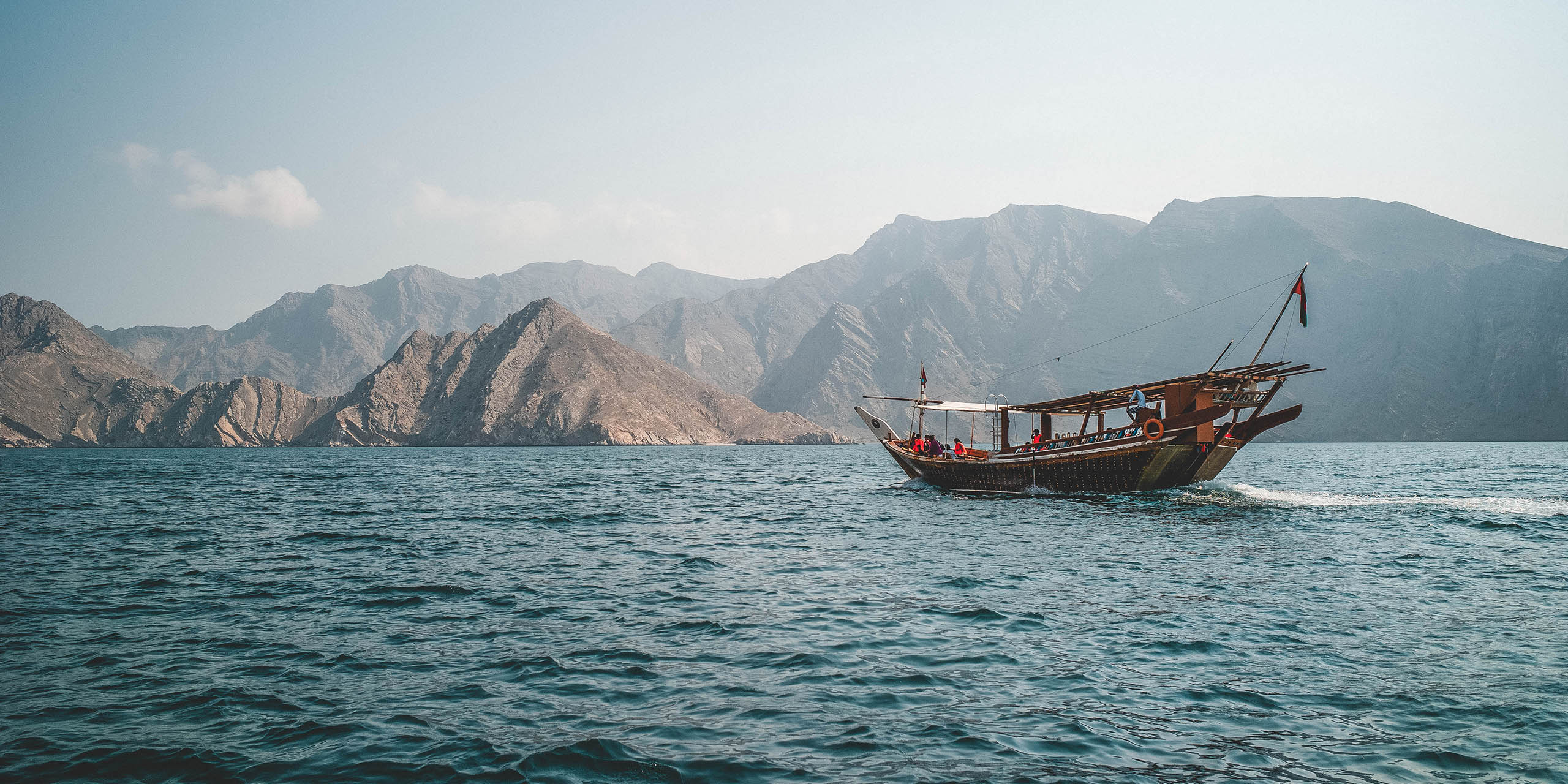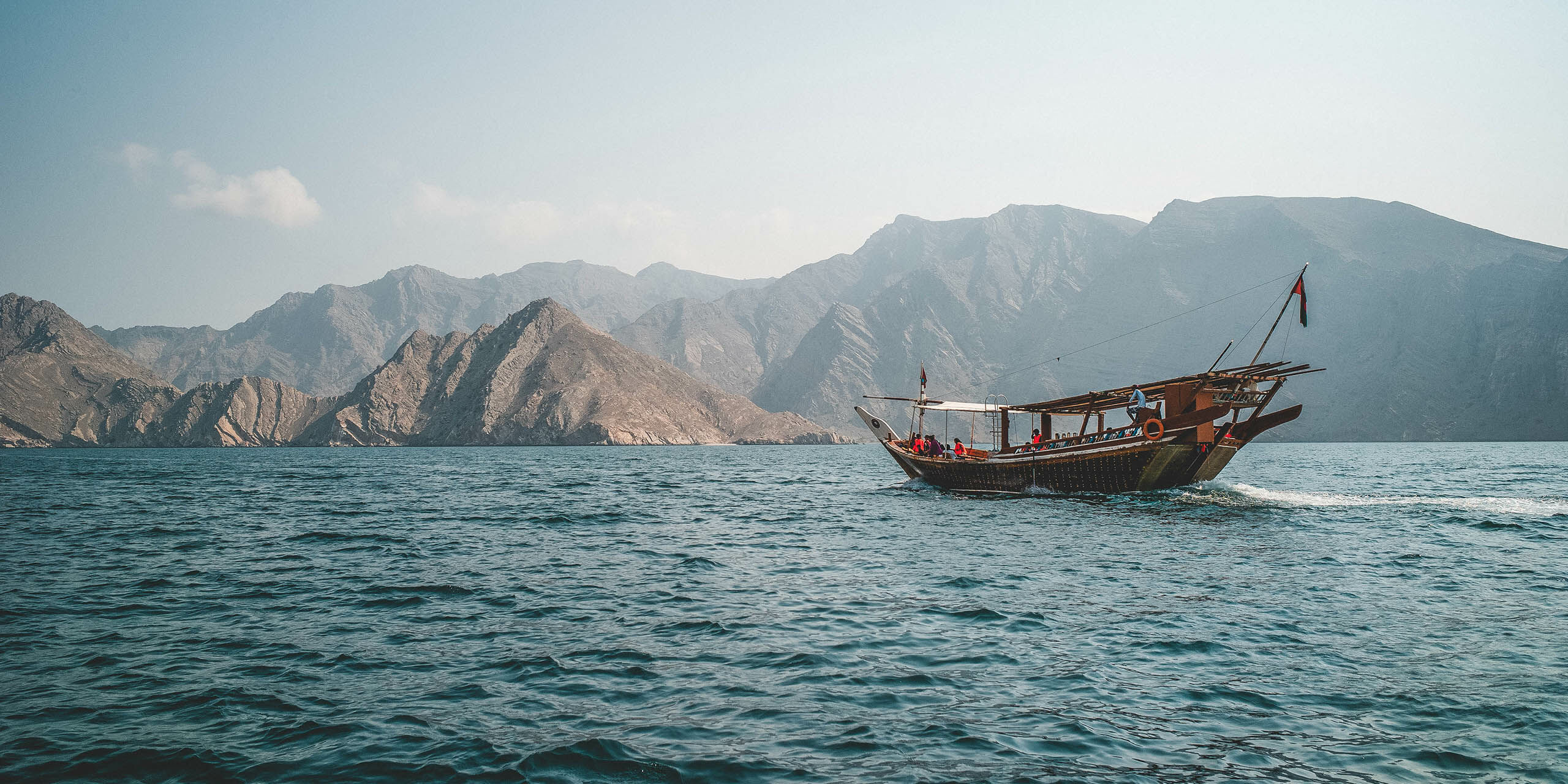
Astonished shrieks wake me from my post-lunch reverie. These noises seem surreal and slightly hysterical as I recline on giant scatter cushions, my belly full of grilled fish, and my system rocked towards slumber by the gentle motion of the dhow as it arrows along the coastline towards the Straits of Hormuz.
Reluctantly I rouse myself and make my sluggish way to the side of the boat to investigate the source of the fuss. It seems we have company judging by the ecstatic looks of my companions and the frantic motioning towards starboard by boatmen Omar and Abdullah. A school of dolphins flanking us is entering into the competitive spirit. Their streamlined silver-blue bodies and long noses give them an early edge on the motorized dhow.
These guys don’t appear to be going for gold. If they were, they surely wouldn’t be wasting precious seconds by throwing themselves so flamboyantly out of the turquoise ocean and into the thick late summer air.
“Very beautiful,” says Omar, understating the case. “They don’t come out every time. Sometimes they are lazy. But there’s usually a good chance that something like this will happen. It’s what many of our customers come here for.”
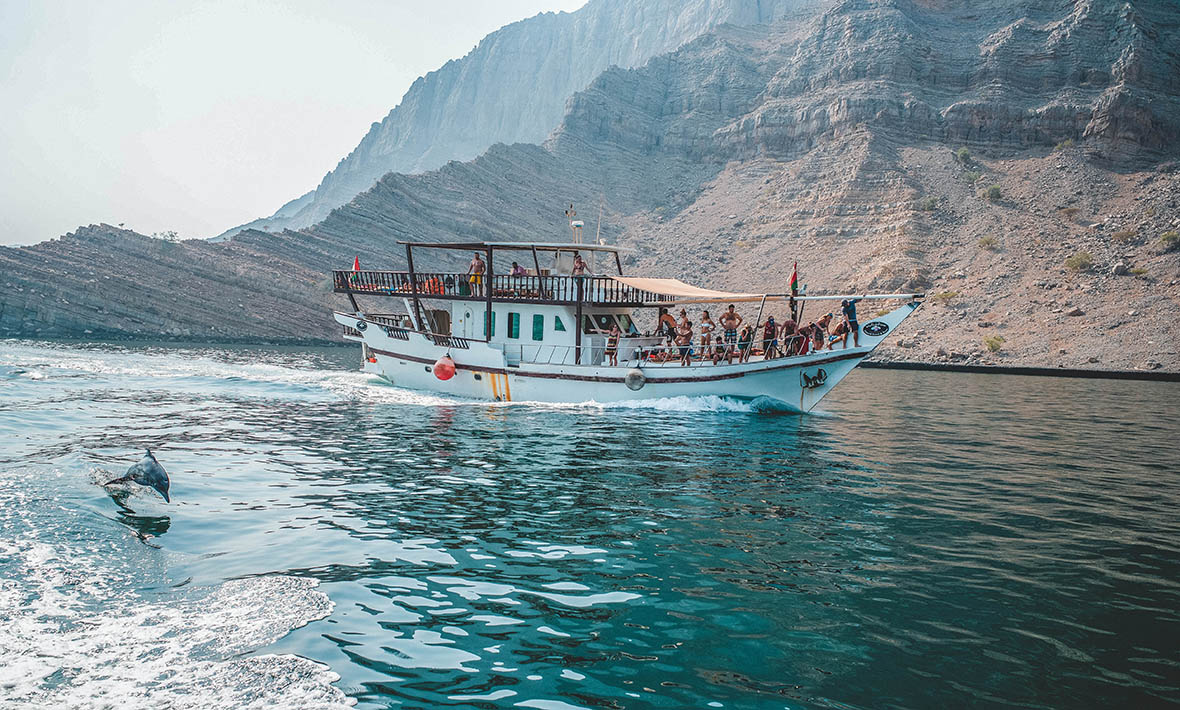
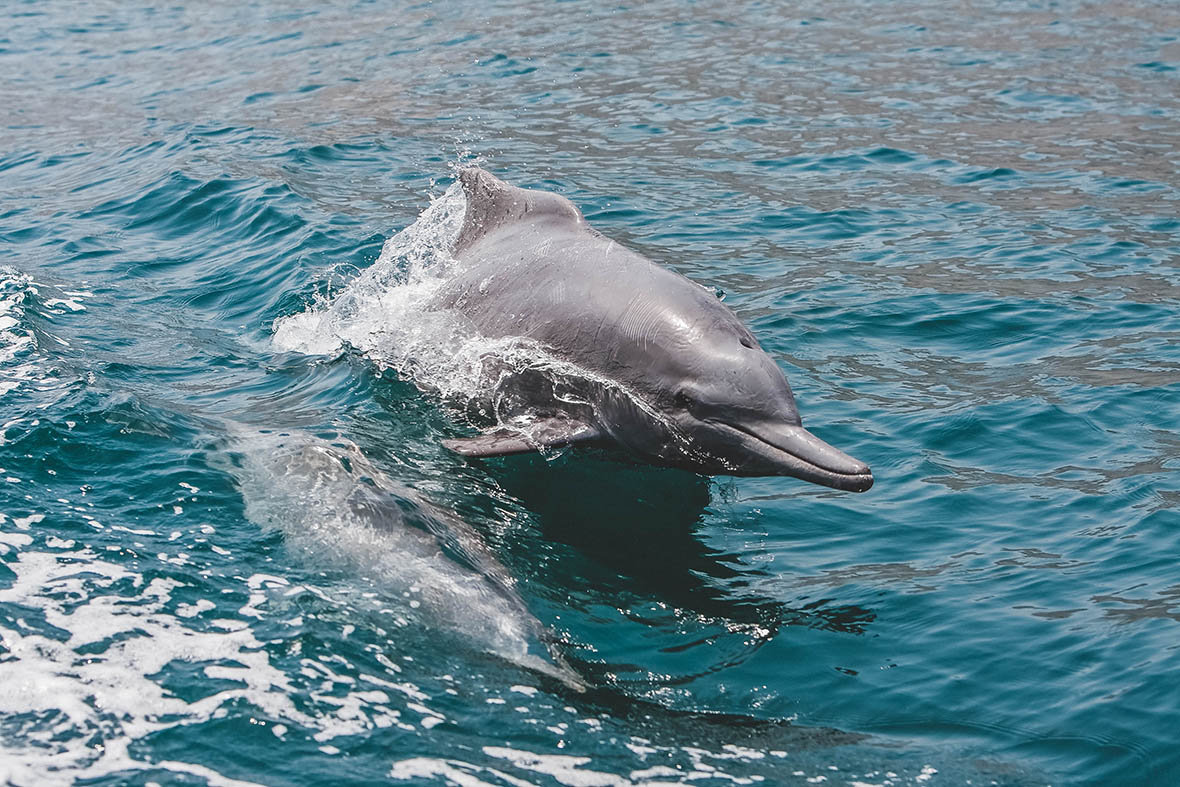
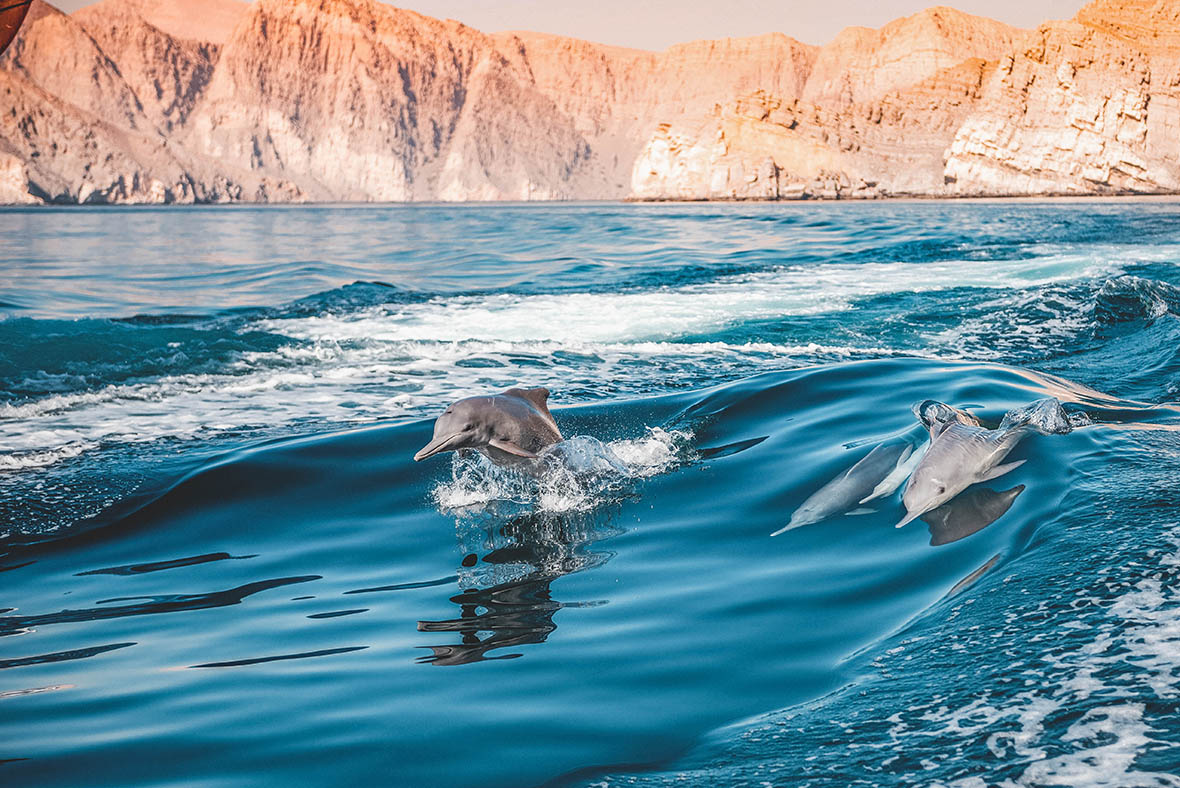
With the race descending into irrelevance, the only sensible thing to do is to admire the showboating and look on in delight and near disbelief as nature applies the dazzle.
Fantastical sights like these are not uncommon in this neck of the Arabian Peninsula. Located in the far north of Oman and separated from the rest of the country by the UAE, the Musandam peninsula is a gloriously remote tract of land where towering mountains tumble down to a coastline indented by deep snaking fjords.
Very beautiful, they don’t come out every time. Sometimes they are lazy.
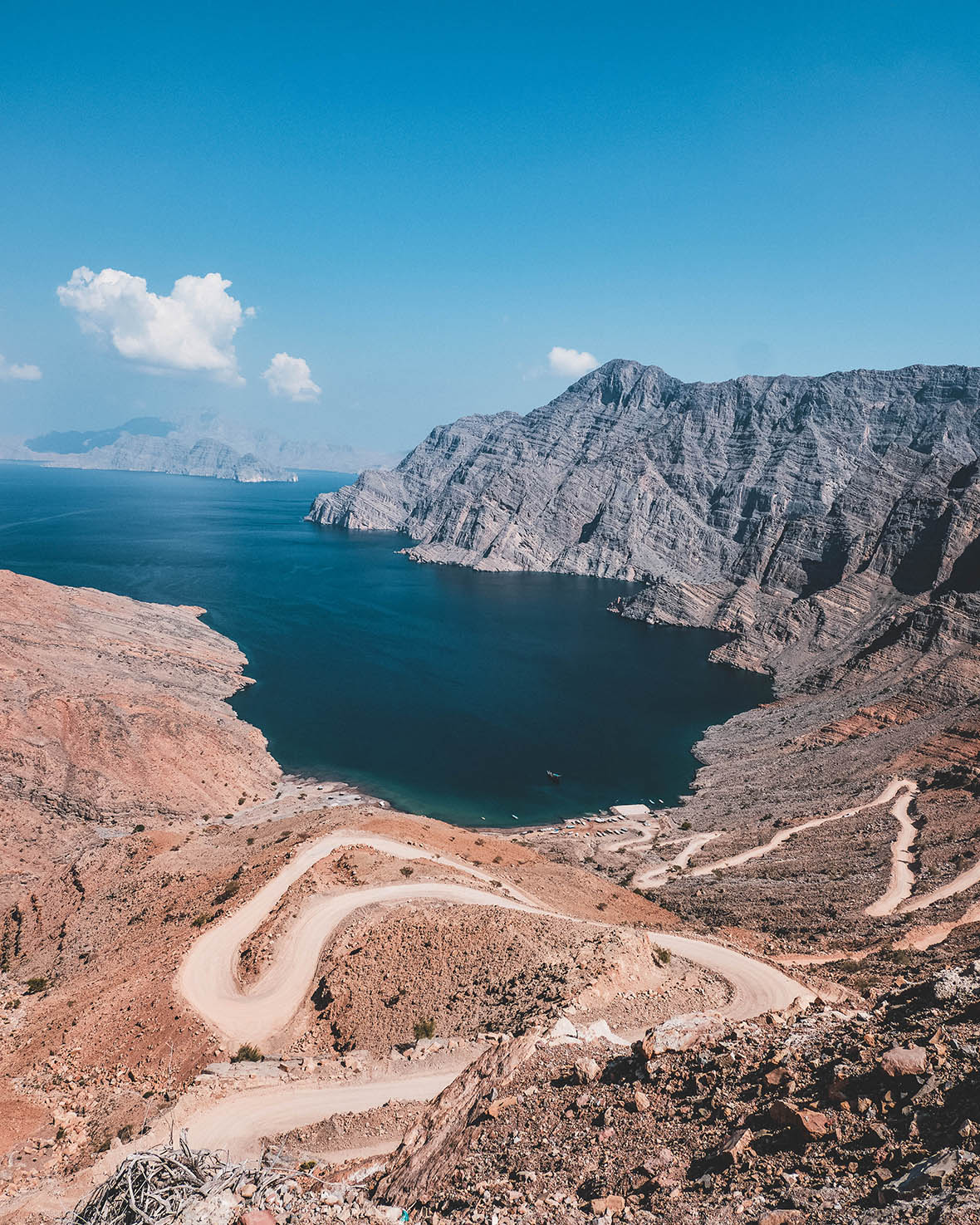
Its isolation made it a closely guarded secret to all but locals, intrepid explorers, and smugglers of contraband from nearby Iran – 40 miles away across the Strait. However, its proximity to Dubai, which is an easy three-hour drive, and its world-class diving opportunities have, if not quite opened the floodgates, eased passage for visitors eager to sample one of the most unspoiled seascapes on the globe for themselves.
The unveiling of the plush Six Senses Zighy Bay resort on the peninsula’s east coast in 2008 brought the area to global attention. Yet, despite persistent rumors of further ambitious luxury developments, the area remains the antithesis of the glitzy tourist hotspots south across the border in the UAE and around the Oman capital Muscat.
Most visitors, this one included, tend to fall for the area’s rugged charms. Not every Brit that has visited has been so enamored with the region’s otherworldly beauty.
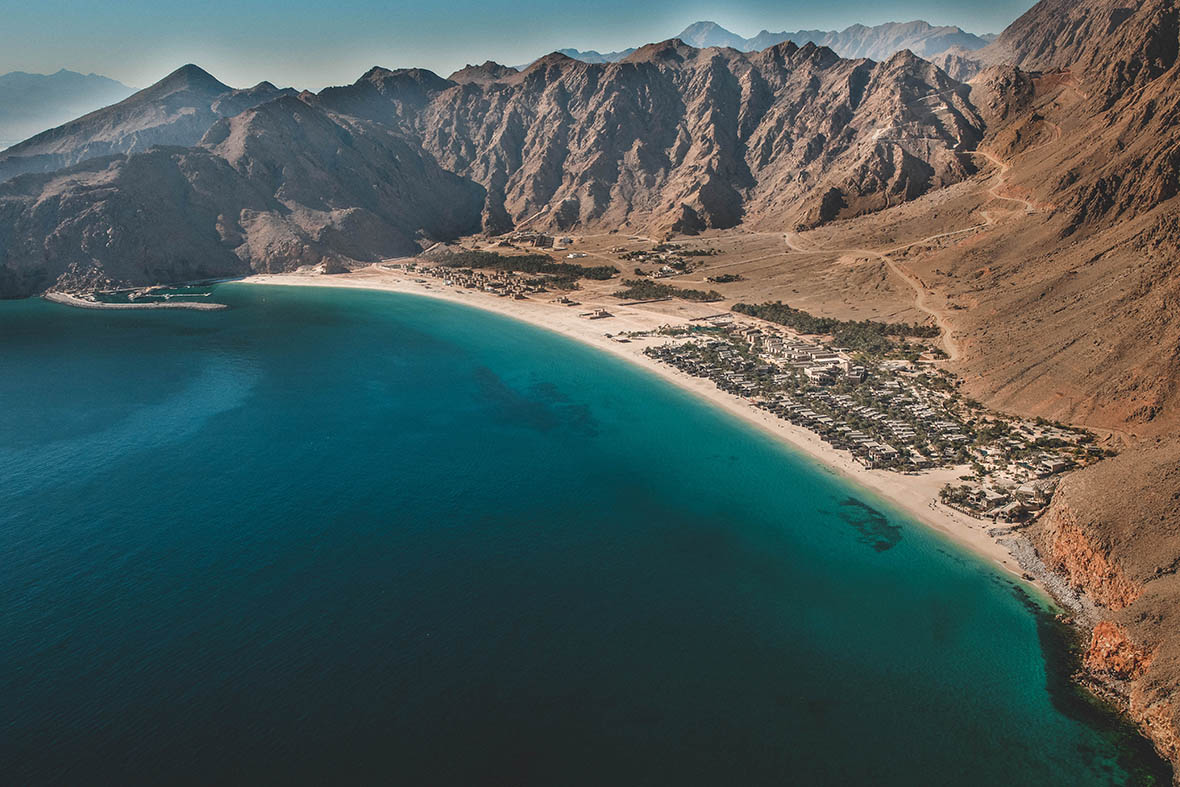
In the 19th Century, in the heyday of the Empire, an island in one of the many inlets that indent the coastline of Musandam was the site of a repeater station used to boost messages along the Persian Gulf submarine cable, which was part of the London to Karachi telegraphic cable. Unsurprisingly, the little chunk of rock was not the most coveted posting in Britain’s imperial armory.
Hostile local tribes made life perilous while the area’s blistering heat, especially in summer, hardly helped return some levity to proceedings. It was here that the phrase ‘to go round the bend’ originated. It was a reference to the manic sense of desperation experienced by most of the men confined to the obscure island nestled in the crook of the inlet.
Frantic dreams of escape couldn’t be further from our minds as the dhow pulls anchor in the silent waters surrounding the rock, which is known as Telegraph Island. After the excitement of the duel with the dolphin pod, it’s time to return to the theme of languid relaxation that typifies a dhow cruise in these parts.
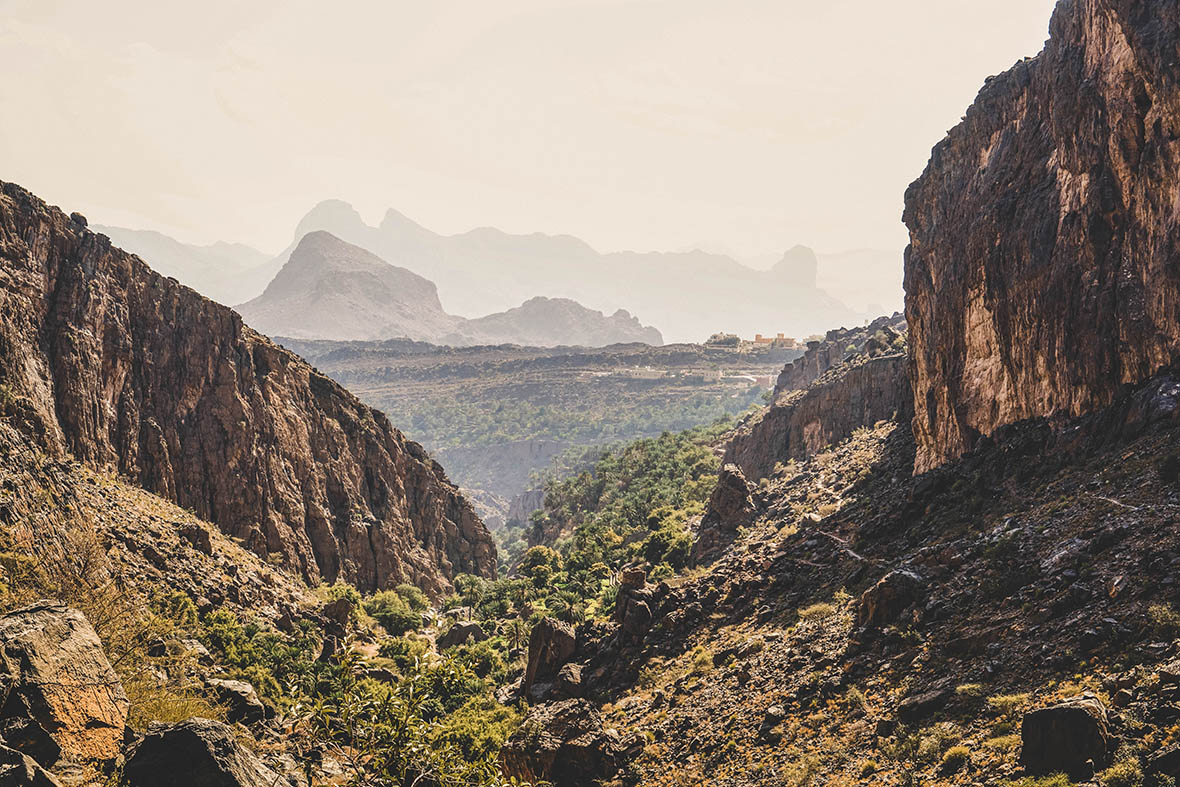
With the surrounding peaks of the northernmost spur of the Hajar Mountains sheltering us from the still broiling heat of the afternoon sun, we use the dhow as a makeshift diving board, flinging ourselves headlong into the deep, tepid water.
This is the second occasion I have visited Musandam. The first time I was based in Dubai and the peninsula provided a welcome respite from the boozy brunch blowouts that typify ex-pat living in the region’s most fantastical city. On that occasion, our dhow cruise took us to the village of Kumzar. The northernmost inhabited settlement in Oman, it is only accessible by boat.
On my last visit, the village was derelict. The packed mud houses mostly lay empty. The dusty alleyways were patrolled by goats, toddlers, and the occasional huddle of gossiping fishwives chattering in Kumzari, the only Iranian language native in the Arabian Peninsula.
The encounter with this centuries-old culture was compelling. But this time it is primarily leisure on the agenda.
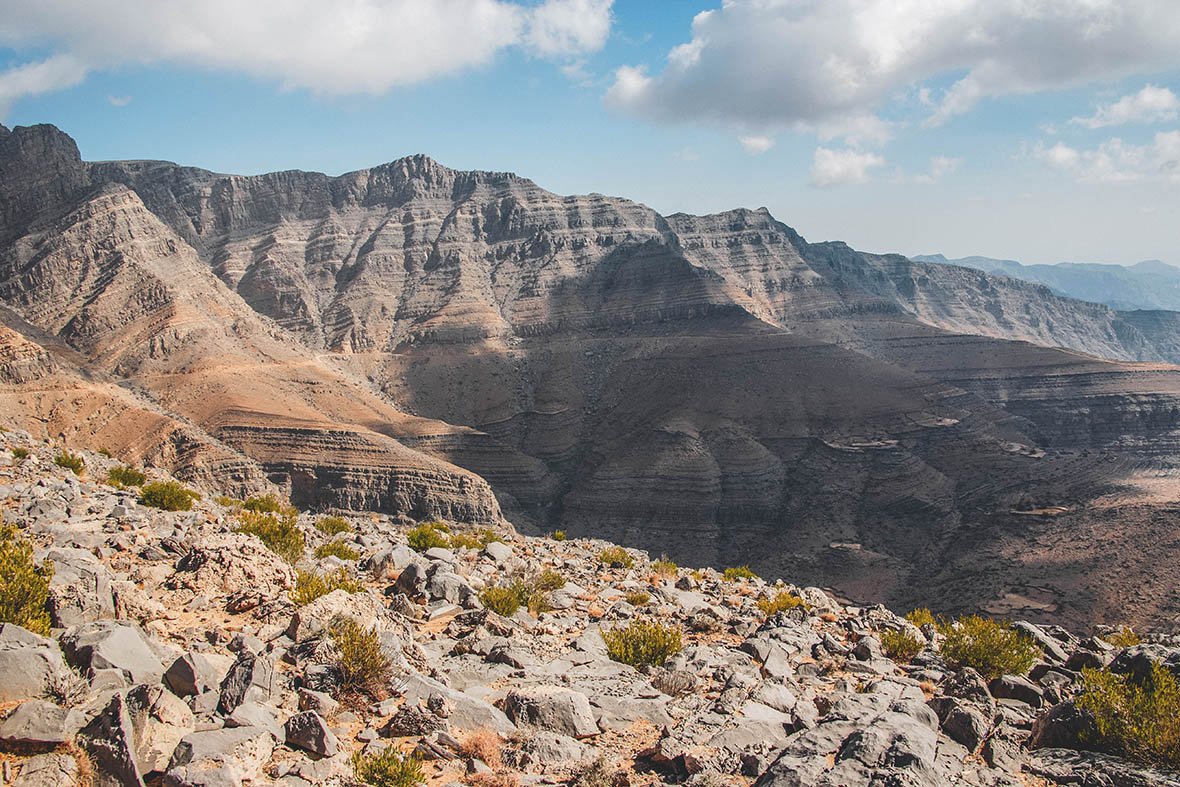
For most visitors, a dhow cruise is Musandam’s prime draw. There’s more to the area, however, than going head-to-head with bottlenoses and drifting down placid waters.
If you are a diver, chances are you’ll be too busy plumbing the depths to even bother with a dhow cruise. The waters around the peninsula are rich in underwater life and there are around 30 dive sites in the area ranging from coral gardens to sheer submerged walls. Various companies run dives from Khasab, the best of which is reputed to be Extra Divers, which has three boats – including a giant catamaran – a well-equipped dive shop and offers villa accommodation for divers.
With nary a PADI certificate between us we decide to head upwards instead on Musandam’s other major draw, a ‘mountain safari’ up to Jebel Harim, the highest peak in the area at just shy of 7000ft. The word ‘safari’ is attached to several activities in the Middle East despite the relative paucity of animal life. Nevertheless, the expedition is worth the absence of anything that growls, barks, or bites.
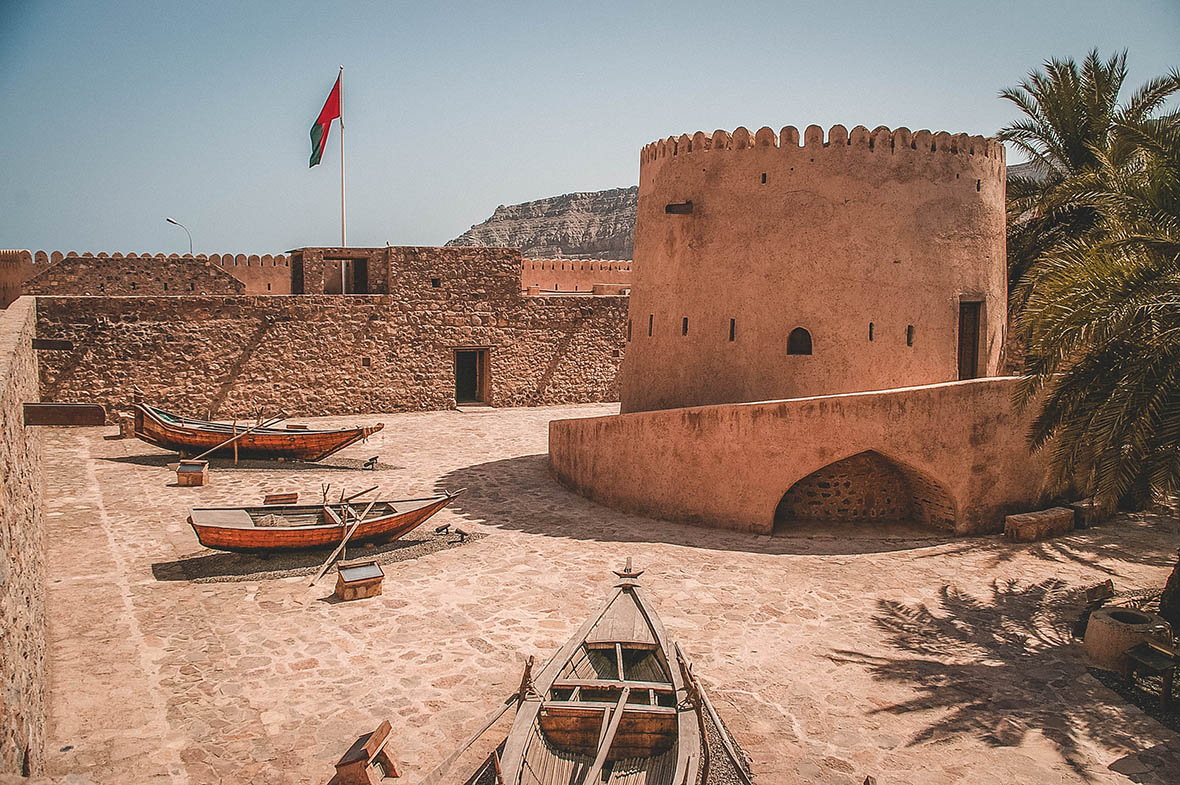
Following a typical Middle Eastern breakfast of tomatoes, cheese, cucumber, and creamy hummus mopped up with flatbread, Omar collects us in his 4×4. Khasab – a tiny port of low rise-buildings a few businesses, run mostly by Indians from Kerala, and the occasional mosque – passes by in an instant and we are soon gaining altitude.
As we climb higher and higher the vehicle swings around switchback bends and past Bedouin cottages and rag-taggle herds of goats and donkeys. The violent movements are slightly jarring, as is the loud skirl of Arabic pop emanating from the stereo system, but the increasingly vertiginous views back down over the fjords are worth the physical and aural discomfort.
The cinematic outlook undoubtedly grabs the lion’s share of the attention but the trip is notable, not just for its visuals, but also for the historical insight it offers. The Hajar Mountains are speckled with fossils. At the abandoned settlement of Tawi, Omar gives us the lowdown. The remains of an ancient mud and stone village are barely discernable. But the prehistoric rock drawings of warriors and boats look like they were etched earlier that day. It’s an apt analogy for a destination that feels ancient yet remains completely fresh.

